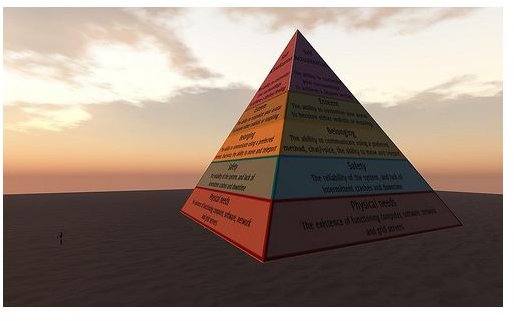Maslow's Theory of Motivation: Applications in the Home Office
The Maslow Theory
In the year 1943, a psychologist by the name of Abraham Maslow published an article on the needs and motivations of humans, especially in the field of employment. Maslow felt that in order to understand a person’s motivation at their work, one needed to understand the person’s general motivations first. This work would become the Maslow Theory of Motivation, where a tier of different needs for a individual must be met in order for them to be satisfied and thus for that individual to become motivated.
This theory has been taught within business classes and used in business structures in order to better understand the employee. But what about in the case of someone with a home office? While sharing the same type of business ideals, the home office work does have some things that are different than that of a person who travels to an office on a daily basis. Can the Maslow theory of motivation be applied to someone at a home office?
What is Maslow’s Theory of Motivation?
To understand how to apply the theory of motivation, you first need to know what steps are involved. There are five needs to Maslow’s hierarchy, beginning with a lower tiered point and then moving upwards. These needs are -
- Physiological - the basic survival skills, such as food, water, and shelter
- Safety - the feeling of security in both home and work
- Social - the need to feel loved, accepted, and a part of a group
- Esteem - being recognized and acknowledged from others, as well as having self-respect, status, and a sense of importance
- Self-actualization - the need to develop to one’s fullest potential
The theory is that when a person fulfills one need, another of the higher level needs emerge and motivates that person to fulfill thenew need that has emerged.
Applying Maslow’s Theory
In corporations, Maslow’s theory is applied to the employees of that business. In a home office, the theory can also be applied, though
perhaps in a different way than that of someone who commutes to work. The needs for both a commuter and a home office worker are the same, just placed in a difference context.
For instance, both workers would need to meet the first need of physiological of having food, water, and shelter. If both are receiving income from their prospective employments, these needs are met, even if the income only goes to these three things. The same is true for the second need of safety - if both workers feel safe within their homes and their work, they move on to the third need. For home office workers, this second need may be the easiest to achieve, as they are secure in both their home and their work, by living and doing what they have always wanted.
The third need, that of social, is probably a home worker’s hardest achievable need. For some home office workers, they may not or will not have a staff or co-workers in which to interact, leaving this third need unfulfilled. Worse, if a home office worker doesn’t feel any motivation to seek out social interactions, they will not be motivated to reach that fourth need. In this case, it is important that home office workers spend time outside of the house, speaking with family, friends, or neighbors. There are several ways in which to be on the road and yet still be able to work.
Home office workers may also have difficulty in achieving the fourth need of esteem. This may be dependent on the actual business of the office, but with no management above or below the worker, sometimes they may not receive the praise that they would like. This is a time when the home office worker must give himself or herself as that praise. For example, if a home officer worker has just won a big client or has just finished a project that was met with success, they should take the time to celebrate.
The last or highest need for a home worker is that of self-actualization. Reaching this level can be good, but can also cause havoc if that need is fulfilled, as the individual may not feel motivated to start the process all over again. However, the process can start again, this time for a different goal. For instance, a home office worker reaches this need when the business hits a certain amount of income or clients; with the need fulfilled, perhaps another goal takes its place, such as going back to school.
Image credit @ Flickr.com
